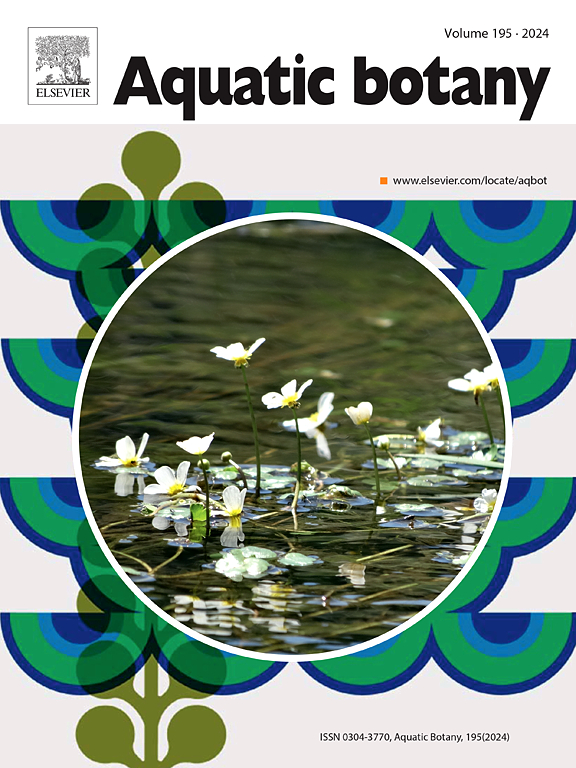Germination of the invasive water primrose Ludwigia grandiflora in Belgium and potential implications for management
IF 2.6
4区 生物学
Q2 MARINE & FRESHWATER BIOLOGY
引用次数: 0
Abstract
Invasive Alien Aquatic Plants (IAAPs) are recognised as one of the major threats to aquatic biodiversity globally. Because of their high growth rate and ability to form dense mats, these plants strongly impact biodiversity and the conservation status of aquatic ecosystems. In Belgium, the invasive water primroses Ludwigia spp. are listed on the Invasive Alien Species watchlist, and conventional management actions (manual or mechanical removal) have been carried out, but successful control stories are underreported. Although seed production has not been reported for L. grandiflora in Belgium, local managers suspect it has occurred over the last five to ten years. We studied seed germination of 18 populations within Belgium by growing collected seeds in Petri dishes under a 12|12 h light regime and 14|24°C temperature regime in growth chambers. Results showed that 14 L. grandiflora populations produced germinating seeds, with final germination percentages ranging from 4 % to 77 % at the end of the study. Time to reach 50 % of germination ranged from 12 to 27 days. These results stress the need to implement control measures for seed production of L. grandiflora populations in the management schemes, especially considering the fast emergence and the high number of seeds produced for some populations. The potential germination could hinder management actions by increasing follow-up control efforts and its associated costs. It is thus in the best interest to prevent seeds ripening by removing the vegetative biomass early in new infestations, and by managing the potential soil seed bank in already established ones.
入侵水报春花在比利时的发芽及其潜在的管理意义
外来入侵水生植物(IAAPs)是全球水生生物多样性的主要威胁之一。由于它们的高生长速度和形成密集席地的能力,这些植物强烈影响生物多样性和水生生态系统的保护状况。在比利时,入侵的水报春花(Ludwigia spp.)被列入入侵外来物种观察名单,传统的管理措施(人工或机械清除)已经实施,但成功的控制故事被低估了。虽然在比利时没有报道过桔梗的种子生产,但当地管理人员怀疑在过去的5到10年里发生了这种情况。我们通过在培养皿中培养收集到的种子,研究了比利时境内18个种群的种子发芽情况,培养皿的光照条件为12| / 12 h,生长室内温度为14| / 24°C。结果表明:14 L。研究结束时,大花茅种群的种子萌发率在4 % ~ 77 %之间。发芽率达到50% %的时间为12 ~ 27天。这些结果强调了在管理方案中对大花兰种群的种子产量采取控制措施的必要性,特别是考虑到一些种群的出苗速度快,种子产量高。潜在的萌芽可能会通过增加后续控制努力及其相关成本来阻碍管理行动。因此,防止种子成熟的最佳方法是在新的虫害发生时尽早清除营养生物量,并在已经建立的虫害中管理潜在的土壤种子库。
本文章由计算机程序翻译,如有差异,请以英文原文为准。
求助全文
约1分钟内获得全文
求助全文
来源期刊

Aquatic Botany
生物-海洋与淡水生物学
CiteScore
3.80
自引率
5.60%
发文量
70
审稿时长
6 months
期刊介绍:
Aquatic Botany offers a platform for papers relevant to a broad international readership on fundamental and applied aspects of marine and freshwater macroscopic plants in a context of ecology or environmental biology. This includes molecular, biochemical and physiological aspects of macroscopic aquatic plants as well as the classification, structure, function, dynamics and ecological interactions in plant-dominated aquatic communities and ecosystems. It is an outlet for papers dealing with research on the consequences of disturbance and stressors (e.g. environmental fluctuations and climate change, pollution, grazing and pathogens), use and management of aquatic plants (plant production and decomposition, commercial harvest, plant control) and the conservation of aquatic plant communities (breeding, transplantation and restoration). Specialized publications on certain rare taxa or papers on aquatic macroscopic plants from under-represented regions in the world can also find their place, subject to editor evaluation. Studies on fungi or microalgae will remain outside the scope of Aquatic Botany.
 求助内容:
求助内容: 应助结果提醒方式:
应助结果提醒方式:


